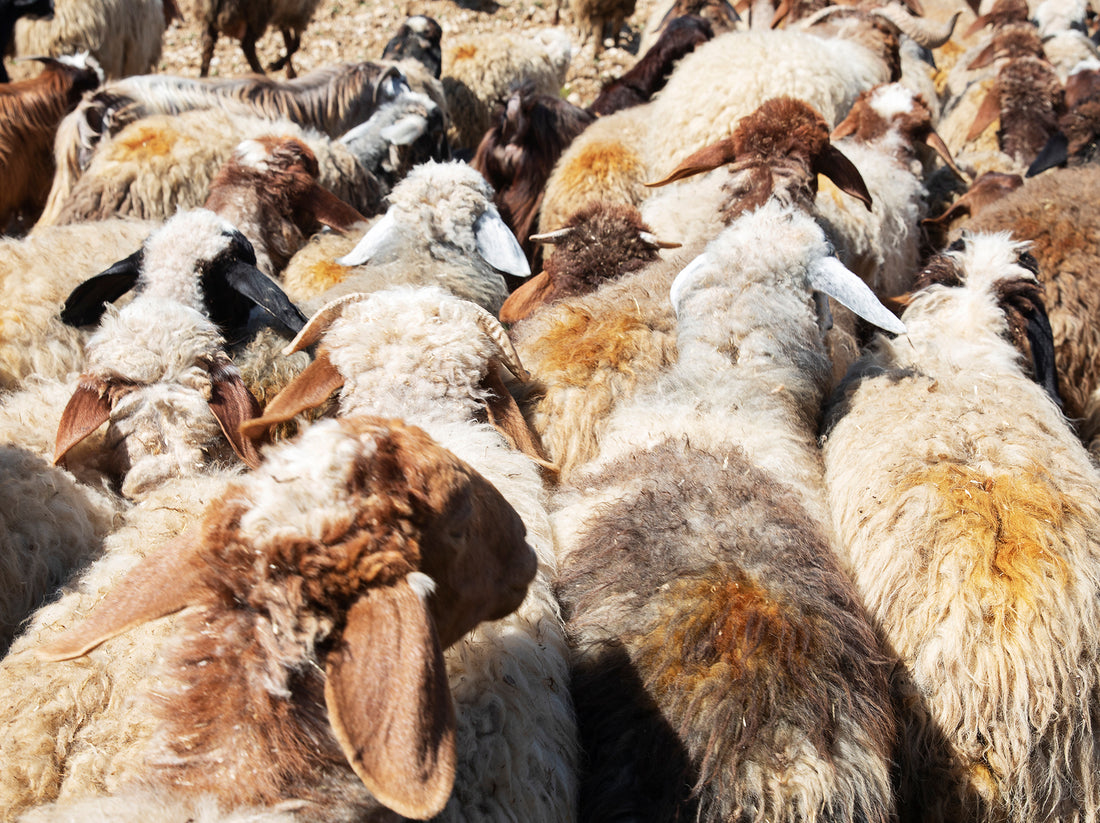
FARM: ISSUE 108
Since the 1800s, farming has run the gamut from natural to GMO. But now that governments have entered the fray with supportive subsidies, and organic farmers are making a concerted marketing effort to illustrate the value of this methodology, growth in the organic movement has accelerated. From its origins to today’s explosive industry expansion, we see how the organic food industry has grown over the last half-century into a global phenomenon. Image: Originator and Stylist, Maria Kvitka; Photographer, Dmytro Komissarenko; Scientific Consultants, Lyudmila Sivtseva-Klymuk, Oleksandra Storchai, Make-up, Kateryna Kaverzina; Models, L-Models Agency Clothing provided by private collectors. Special thanks to Valery and Oksana Afanasyeu and Vladislav and Lyudmila Chabanyuk. The project was created with the support of the Zagory Family Foundation. Cover of issue Farm, issue 108
Image: Originator and Stylist, Maria Kvitka; Photographer, Dmytro Komissarenko; Scientific Consultants, Lyudmila Sivtseva-Klymuk, Oleksandra Storchai, Make-up, Kateryna Kaverzina; Models, L-Models Agency Clothing provided by private collectors. Special thanks to Valery and Oksana Afanasyeu and Vladislav and Lyudmila Chabanyuk. The project was created with the support of the Zagory Family Foundation. Cover of issue Farm, issue 108
Communicating the key benefits of this type of agriculture is critical as it is a more expensive method of production, resulting in pricey products. Today two-thirds of households buy organic products and consumers are increasingly interested in the provenance of their purchases. The move towards organic offerings doesn’t end at the plate — instead, shoppers are looking for holistic options across the board. Image: Entangled Matters, Beirut, 2021, Adrian Pepe. Image courtesy of Marie Ravn.
Image: Entangled Matters, Beirut, 2021, Adrian Pepe. Image courtesy of Marie Ravn.
So why are fibre farmers lagging behind? Textiles are tricky: the old adage ‘you get what you pay for’ is a bit of a paradox when it comes to clothing. Fast fashion may be poorly constructed and quickly falls apart but fossil fuel fabrics actually last way longer than farmed fabrics. Despite the current trend for darning, it is a hard sell to convince consumers that they should spend ten times more on a wool sweater so they have the luxury of darning the elbows when they rub through. Clearly, we need more ammunition in our arsenal. In her article Yan Tan Tethera, Judith Schwartz extolled the environmental benefits of raising sheep. Elsewhere, Adrian Pepe discovers the quality of local Awassi fleece as economic necessity forces him to the hills to source materials. We stay with sheep as Annie Oakley Waterman explores northern Portugal and finds a thriving artisan economy supported by local breeds.
We also look at farmed fibre cultivation; willow in the UK, abaca in the Philippines, linen in Slovakia and hemp in South Korea, and find blueprints for sustainable production everywhere we visit. If you would like to try your hand at living off of the land Bella Gonshorovitz teaches us how to grow, cook, dye and wear rhubarb. Image: The Beautiful Everyday - Refined Elegance of the Ukrainian Peasant. Image courtesy of Dmytro Komissarenko.
Image: The Beautiful Everyday - Refined Elegance of the Ukrainian Peasant. Image courtesy of Dmytro Komissarenko.
As the war in Ukraine slips from the headlines we remind our readers of The Beautiful Everyday - Refined Elegance of the Ukrainian Peasant in our stunning shoot styled for us by Maria Kvitka and photographed by Dmytro Komissarenko.
By Polly Leonard, Founder of Selvedge Magazine
Buy your copy of issue 108 on our website: www.selvedge.org

1 comment
I love this article. For the future of mankind and this planet we have to be sustainable and get completely back to nature. Quick fixes and short term gain in industry have no purpose or future for any of us.